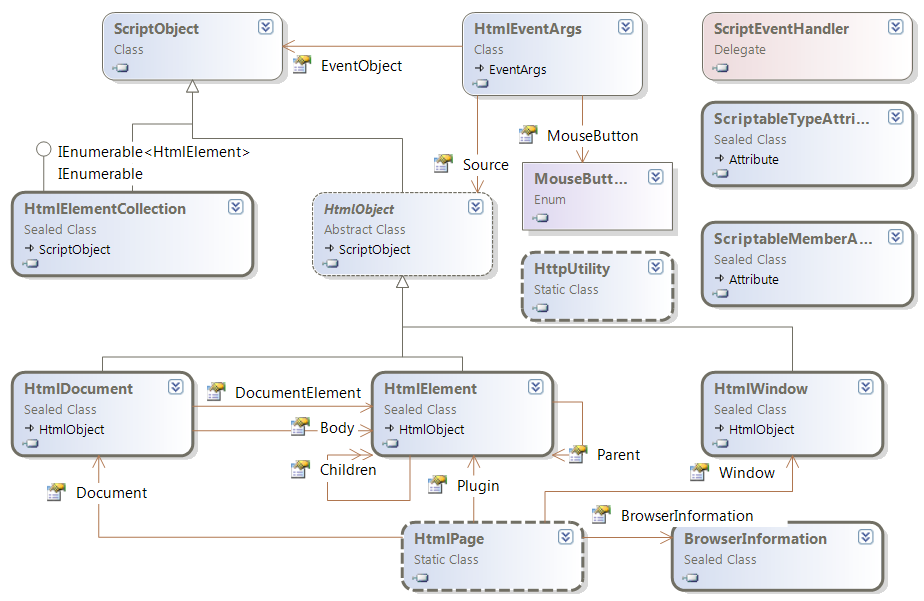Sat, March 8, 2008, 11:12 AM under
Silverlight
Given that Silverlight applications sit in the browser via a plug in, it would be silly if you couldn't interact from managed SL code with other browser elements, such as html elements and script so that you could, for example, reuse existing assets. I have heard the browser-agnostic integration featured described as
HTML Bridge and it is implemented in the
System.Windows.Browser.dll assembly in a
same named namespace. You can see the types from that namespace on the following image (click on it for the
expanded version):

The important inheritance hierarchy to be aware of is that
HtmlDocument and
HtmlElement inherit from
HtmlObject (that allows handling script events via
AttachEvent) which inherits from
ScriptObject (that allows you to execute scripts via its
Invoke and
InvokeSelf methods).
HtmlPage is a great entry point because you can navigate across its
Window property to an
HtmlWindow (that allows e.g. to
Navigate URLs) and across its
Document property to an
HtmlDocument (that offers e.g. access to
Cookies and
QueryString). Also note the 2 Attribute classes:
ScriptableType and
ScriptableMember. Those are used for exposing Silverlight managed classes to script in the browser combined with
HtmlPage.
RegisterScriptableObject and
RegisterCreateableType methods. Open the expanded class diagram in a separate window and identify the aforementioned methods. Notice there how
HtmlDocument allows you to create new elements and retrieve existing ones (
CreateElement and
GetElementById). Once you have references to those
HtmlElements you can do things like
SetAttribute,
SetStyleAttribute and
AppendChild to name a few. Script events are handled in your managed
ScriptEventHandler method that accepts an
HtmlEventArgs which you can find on the class diagram along with its relationships (e.g.
MouseButtons). You should also checkout the
HttpUtility class and its self-explanatory methods such as
UrlEncode.
Phew! Take a moment to study the two class diagrams using the previous paragraph as a guide and also note that all links above are direct links to the API documentation (i.e. this blog post becomes my bookmark into MSDN ;)). You can also follow a quickstart (
DOM access), two walkthroughs (calling
managed from script and
script from managed), and for those that want even more,
follow this 2-hour lab (ZIP).
To see some of the browser integration in action, I have here the
ugliest and most basic SL app that simply proves some of the concepts.